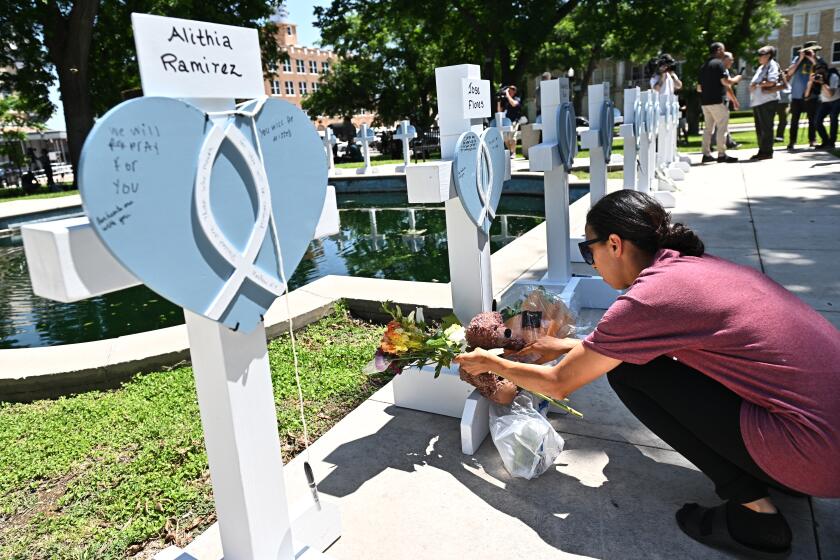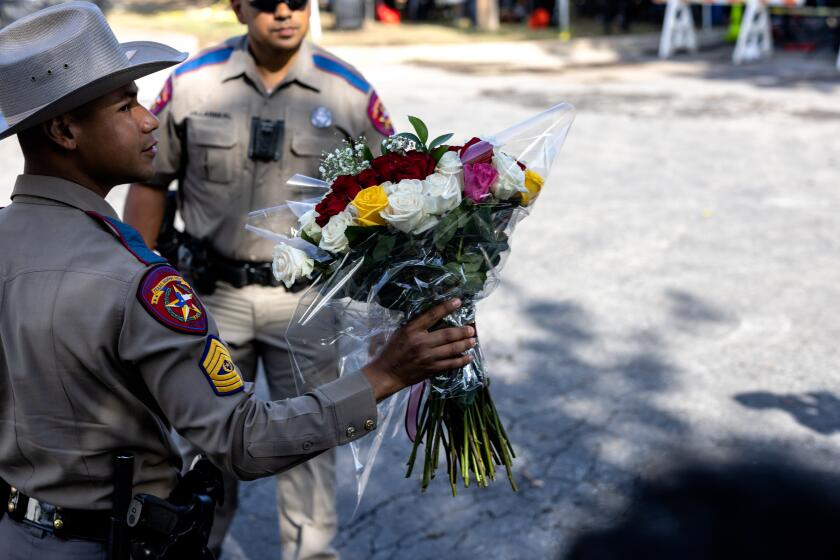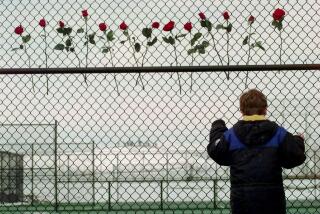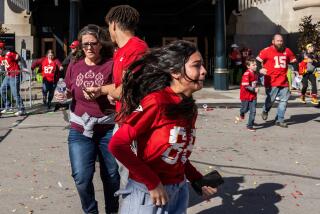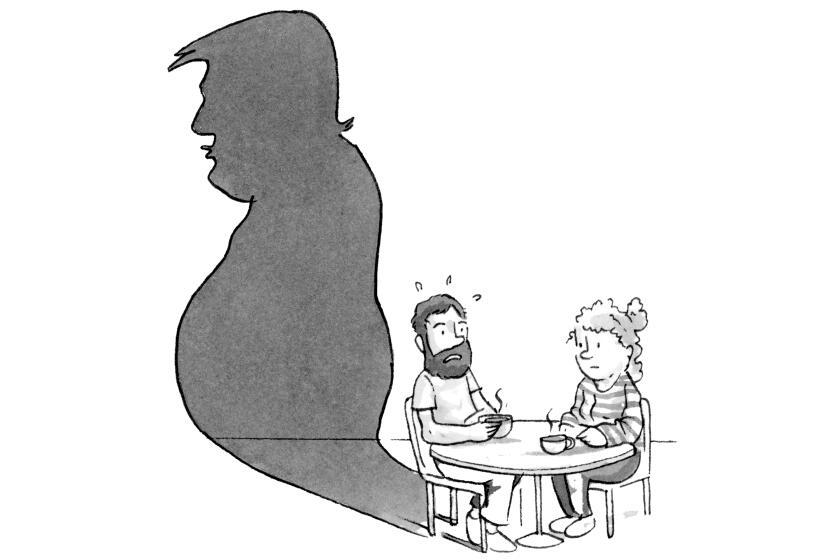Commentary: I have a mental map of mass shootings. Will it ever stop filling up?
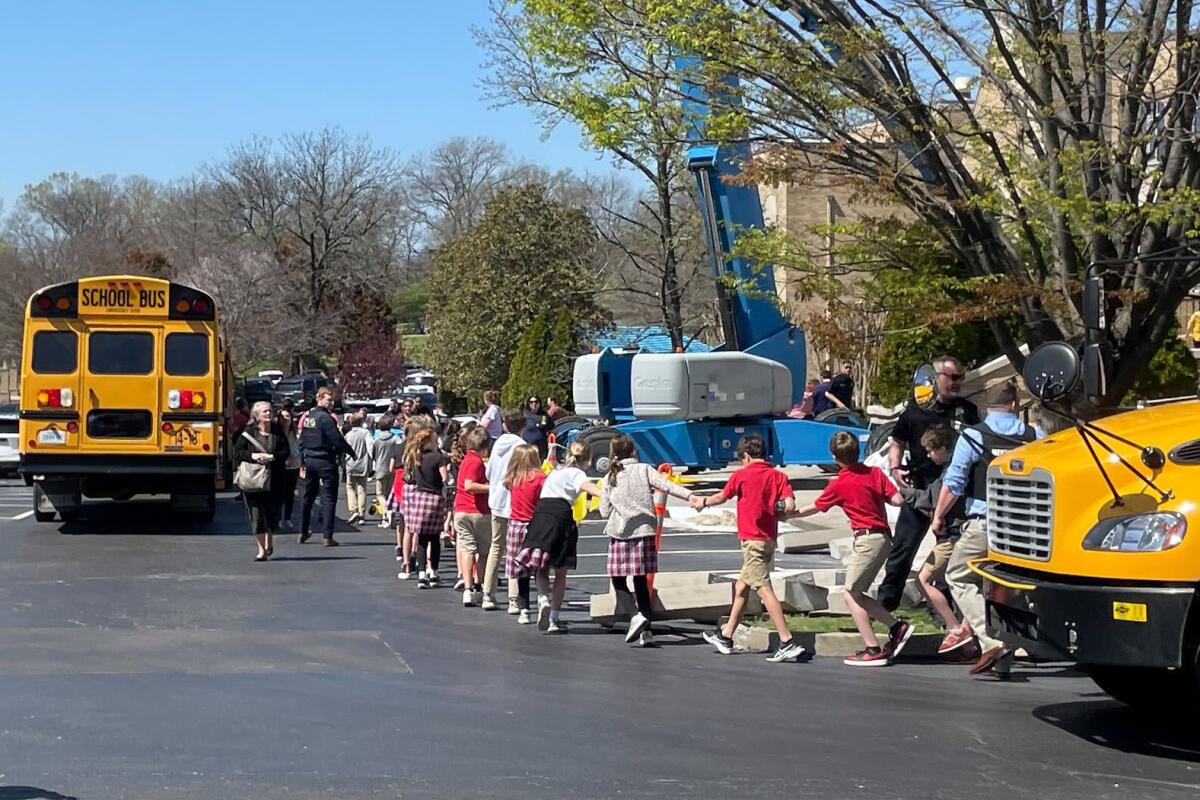
After a shooting that killed six people, including three 9-year-old kids, Monday in Nashville, I found myself thinking about how we process the ever-growing list of mass gun murders.
For me, each mass shooting adds to the list of places near and far that I’ll forever associate with the day someone, empowered by easy access to plentiful firearms, decided to kill.
I visualize them as pins on a mental map of the communities and locations across the U.S. that has been filling up my whole life. The familiar ones stick with me most: A shopping center I still drive by. A nearby school. A grocery store I went to growing up. These places become inescapable reminders of our leaders’ decades-long acceptance of mass death, and the everyday terror of living in a country where your life could be cut short at any time, at any place, for any reason, by someone with a gun. How many of us have these coordinates accumulating in our minds?
Resisting gun control is one of the many ways our country’s leaders tolerate violence against children whom they have the power and responsibility to protect.
I’m 38 and over my lifetime the number of mass shootings and their death toll have increased. They went from seeming rare and shocking to frequent and almost expected in a country where these killings occur with frustrating regularity. They’ve become a shameful fact of life in a nation with too many guns, a culture so ruthlessly individualistic that it values access to firearms above the right to live, and politicians — most of them Republicans — whose cruelty and indifference allows this national suicide to carry on, shooting after murderous shooting.
It’s terrible that place names such as Newtown, Aurora and Uvalde have become shorthand reminders that one day we may not survive a trip to the store or a restaurant, a day at work or school. I think we all suffer indirect trauma from this landscape of tragedies encircling us.
The first mass shooting I can remember, as a kid who grew up outside Denver, was at a Chuck E. Cheese restaurant about 25 miles away, where a fired ex-employee killed four workers with a pistol. I was only 9 years old at the time but saw and heard the coverage of the killings on the news. It was frightening and disturbing that something so horrible could happen at a place I associated with pizza, arcade games and birthday parties.
Five years later, when I was in ninth grade, a dozen students and a teacher were killed by gunfire at Columbine High School on the other side of the Denver metro area. I can still picture the classroom I was in when we heard the news that kids our age had been slaughtered inside their school. Two years ago, when a gunman killed 10 people at a supermarket in my hometown of Boulder, Colo., that I had been to many times over the years, I could see the aisles and checkout lanes clearly in my mind.
Perhaps it’s the fate of the United States to watch its soul die along with the 19 students and two adults shot to death Tuesday at an elementary school in Uvalde, Texas.
Like many reporters, I’ve also covered my share of these shootings, and those get added to the map too. I think of interviewing witnesses outside a Seal Beach hair salon where a man killed eight people in 2011— at a shopping center I still drive by from time to time — and the 2015 San Bernardino attack where a married couple killed 16 people at a work event a few miles from my home. That day I raced to a local hospital as we tried to get a handle on how many were dead and wounded. I still think about it every time I pass by the exit on the 10 Freeway near the shooting site.
The pins on my map just keep multiplying. In 2023, there have already been more than 130 mass shootings, defined as having four or more victims killed or wounded, according to the Gun Violence Archive. And that’s not counting the more frequent everyday shootings that account for the vast majority of gun deaths. The most common locations are where we spend our daily lives: workplaces, shopping centers, restaurants, schools, places of worship.
The details of the crime, the shooter’s name and the motive matter so much less than the nation’s failure to enact gun safety laws that would save lives.
I’d like to imagine a day when the shootings will stop or at least taper off or that I could point to some evidence that there’s a limit to the amount of preventable death and suffering that U.S. leaders will tolerate while they stand by and do nothing. But the only certainty is that another massacre will soon add another dot on this disgraceful atlas.
More to Read
A cure for the common opinion
Get thought-provoking perspectives with our weekly newsletter.
You may occasionally receive promotional content from the Los Angeles Times.
